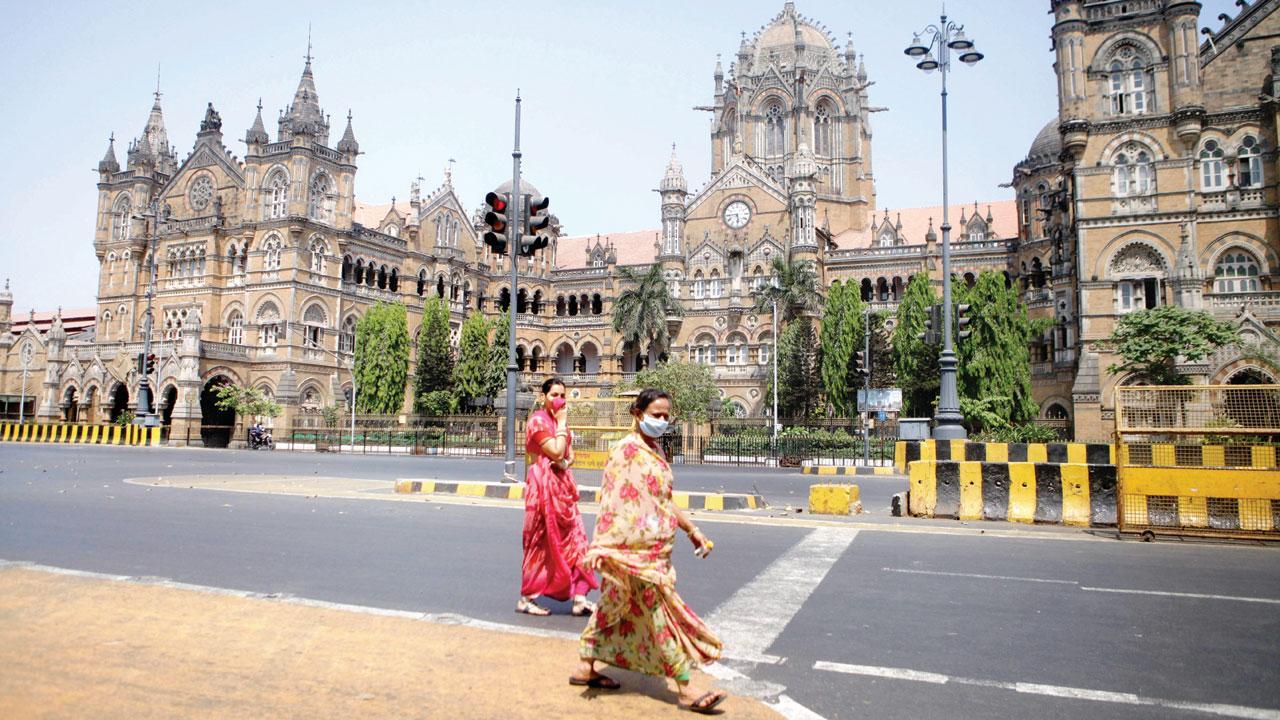A UK-based professor’s sound map, which crowdsources audio clippings of the lockdown environment from across the world, including India, is worth checking out

A deserted CSMT early into the lockdown in March last year. Pic/Ashish Raje
On the first Sunday of the Coronavirus-induced lockdown—just a few hours before we created a racket by banging pots and pans in a show of solidarity for our frontline workers—the silence in the air had been discomforting. Mumbai, for the first time, didn’t “sound” like itself anymore. The din created by the revving of bike and car engines, the blaring horn of speeding BEST buses, and even the on-loop railway announcement, had been replaced by something more “real”. Suddenly, one could hear the “jugalbandi” of chirping sparrows and noisy crows. And on most afternoons, it was deafening silence. These were the new sounds we were growing accustomed to over the next few months, until the city slowly started opening up. If there’s any regret now, it is that we didn’t record what we had
been hearing.
ADVERTISEMENT
The sound map is currently accessible on Google Earth, and offers a range of clippings, from PSAs to birdsongs, traffic, and the music created by rustling of trees and wind
But, an innovative and unusual sound project is helping fill this gap. In March last year, three days into the lockdown in the UK, Pete Stollery, Chair in Music at the University of Aberdeen, UK, launched the COVID-19 Sound Map on Google Earth. The idea was to “capture sonic environments, which have changed as a result of governments’ actions around the world to curb the spread of the virus”. In the last one year, the project has developed into a crowd-sourced sound map, comprising over 230-plus sounds from 24 countries around the world, and it’s still evolving. From sounds of birdsongs in forests and urban spaces, to the stillness of empty streets, the cautionary public service announcements, and “claps and horns” celebrating our brave carers and doctors, the project—built with contributions of audio clips from across the globe—is an important documentation of recent history. That it is currently accessible to everyone means you can enjoy this experience on your phone. All you need is a pair of headphones.
The man behind the project, Pete Stollery. Pic Courtesy/abdn.ac.uk
All the audios are available in alphabetical order—either starting by name of place or theme. One of the first audios we heard was contributed by Kerstin Ergenzinger from Berlin Airport, which was recorded on April 30, 2020. “I spent about three hours walking in and between the different terminals. I have never experienced this place or any other airport like this. Very few people, mostly different staff, some bus drivers waiting on benches with two-metre distance, very few travellers. The entire time, one propeller plane departed and one regular plane arrived,” he writes. His audios include one taken outside the terminal, and the other inside. While we can hear the buzz of a departing flight, which grows fainter as it flies, and the trickling sound of water from a tap, the one taken inside the terminal, sounds gloomy. Except for a PSA on smoking, and light movement of feet, we can’t hear much. The birdsongs, of which there are many, are a delicious treat to the ears. You can hear the ones taken in Chandigarh, or even in Varaždin, Croatia, or Summerhill, UK, and soak for a bit in the universal sounds of nature. Don’t miss the music created by the wind in Northern Island. The sounds were created as a result of wind blowing across a metal gate’s holes. This one is surreal, and as the contributor Pedro Rebelo, shares, “the recording has no human intervention”. There is also a recording taken in Mumbai—a PSA from Tata Trusts, reaching out to rural communities across different states by sharing messages that help people practice good hygiene and social distancing to combat COVID-19.
If you are someone who finds music in the everyday, this is interesting to tune into. Stoller’s attempt to preserve memories of a time, not through stories, drawings or videos, but sounds is commendable. It leaves so much to our imagination, and that makes it another kind of musical experience.
 Subscribe today by clicking the link and stay updated with the latest news!" Click here!
Subscribe today by clicking the link and stay updated with the latest news!" Click here!







